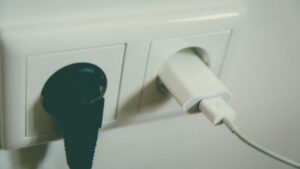Topic
The Art of Efficient Waste Management: Key Strategies and Benefits

Understanding Waste Management
Waste management involves collecting, transporting, and disposing waste to protect the environment and public health. Efficient practices help communities save costs and address the increasing waste challenge in urban areas. For example, comprehensive waste solutions like those offered by Waste Removal Lindsay, ON, provide tailored options that ensure waste is handled responsibly and sustainably. Implementing recycling programs and composting initiatives can significantly reduce landfill contributions while conserving resources. Moreover, public education campaigns are crucial in encouraging individuals to adopt eco-friendly waste disposal habits.
The Environmental Impact of Waste
The mounting level of improperly managed waste directly threatens environmental integrity. When waste is not correctly disposed of, harmful pollutants contaminate the soil, water sources, and the air we breathe. This disrupts natural ecosystems and poses severe risks to humans and wildlife alike. Notably, methane emissions from landfills contribute to climate change, exacerbating global warming. Addressing these issues requires a concerted effort towards sustainable waste management practices. Reports by credible sources such as the U.S. Environmental Protection Agency stress the critical need to minimize these harmful impacts by promoting policies that encourage recycling, composting, and energy recovery.
Key Strategies for Effective Waste Management
Transitioning to effective waste management involves embracing strategies that handle waste and reduce its generation at the source. This approach’s Central elements include Reduce, Reuse, and Recycle principles. By reducing unnecessary consumption and waste production, reusing materials whenever possible, and recycling items at the end of their life cycle, communities can decrease their environmental footprint significantly. Implementing composting for organic waste is another crucial strategy that transforms waste into valuable soil enhancers. Additionally, investing in waste-to-energy technologies can transform waste into a resource, providing an alternative to fossil fuels. Here’s how these strategies can be implemented:
Steps to Implement
- Foster a culture of recycling within communities by setting up accessible recycling points.
- Introduce community-wide composting initiatives for converting waste into valuable organic matter.
- Encourage local industries to adopt waste-to-energy solutions to derive energy from waste products.
Benefits of Reducing Waste
The advantages of efficient waste management extend well beyond environmental benefits. On a financial level, it reduces waste collection and disposal costs, freeing up funds for alternative community projects. Environmentally, it aids in conserving natural resources and diminishing pollution levels, contributing to a healthier ecosystem. On the social and health fronts, communities with lesser pollution benefit from better air quality and reduced health risks. Understanding these benefits can prompt more individuals and businesses to participate actively in initiatives to reduce waste.
Innovative Trends in Waste Management
The contemporary landscape of waste management is dynamic and characterized by breakthroughs in technology and operations. Smart bins with sensors and IoT technology revolutionize how waste is collected and sorted, ensuring efficient resource allocation. Artificial intelligence is increasingly used to enhance sorting processes, making recycling more effective. Moreover, blockchain technology is being explored for its potential to track waste streams, ensuring transparency and accountability. The global shift towards a circular economy—where waste is viewed as a resource—drives much of this innovation. This shift is essential for breaking the link between economic development and ecological degradation, paving the way for sustainable growth.
Real-Life Examples of Successful Waste Management
Several cities and organizations globally serve as exemplary models of successful waste management practices. San Francisco, for instance, has implemented a zero-waste policy that focuses on recycling and composting, successfully diverting approximately 80% of its waste from landfills. Similarly, multinational corporations like Patagonia embrace sustainability by adopting circular economy principles, repurposing material to create new products, and significantly reducing waste. These real-world examples demonstrate the tangible benefits of strategic waste management initiatives.
Common Challenges and Solutions
Despite the progress in waste management, numerous challenges remain. A primary obstacle is contamination within recycling streams, often due to improper sorting or lack of public awareness about recyclable materials. This contamination can undermine recycling efforts, leading to more waste in landfills. Solutions include improving public education regarding waste separation and employing technology to aid in accurate sorting. Financial constraints also pose barriers to implementing advanced waste management systems but can be alleviated through governmental subsidies and international aid, encouraging wider systemic adoption.
Future Outlook on Global Waste Management
Looking ahead, the future of waste management is geared towards increasingly sustainable solutions. Population growth and urbanization will continue to drive the demand for innovative waste management strategies. Continued technological advancement, alongside policy initiatives aimed at enhancing waste management practices, will be crucial for confronting future challenges. As more international cooperation emerges in environmental protection, a cleaner, more sustainable global ecosystem seems within reach.
Topic
How Emergency Standby Power Keeps Critical Systems Running During Outages

Power outages can strike without warning, disrupting homes, businesses, and critical infrastructure. Whether caused by storms, equipment failure, grid overload, or maintenance issues, these outages can lead to substantial financial losses, safety hazards, and operational setbacks. For facilities that rely heavily on continuous electrical power, such as hospitals, data centers, manufacturing plants, and emergency response centers, losing electricity for even a few seconds can have severe consequences.
Emergency standby power systems provide a lifeline in these situations. Designed to automatically supply electricity when the primary power source fails, these systems ensure that important equipment and services remain operational. They prevent business disruption and protect lives, data, and assets in environments where downtime is simply not an option.

The Role of Standby Generators in Power Continuity
At the heart of most emergency standby power systems is a standby generator. These generators are designed to automatically start when an outage is detected and provide power until utility service is restored. Unlike portable generators that require manual activation and limited capacity, standby generators are permanently installed and integrated into a building’s electrical system.
They are typically fueled by diesel, natural gas, or propane, and are capable of powering entire facilities or designated circuits depending on the system design. When properly sized and maintained, standby generators can run for hours, or even days, without interruption.
What makes them truly valuable is their ability to engage automatically and seamlessly. The moment a disruption is sensed, the system reacts within seconds to restore power, ensuring minimal downtime and no manual intervention during a crisis.
Why Transfer Switches Are Important
A critical component of any standby power system is the transfer switch. This device detects a failure in the utility power and shifts the electrical load to the generator. Once utility power is restored, the switch transfers the load back, allowing the generator to shut down safely. Facilities looking to streamline this process often search for automatic transfer switches for sale to upgrade their emergency systems with faster and more reliable switching capabilities. These switches are crucial in maintaining uninterrupted service in high-stakes environments like healthcare facilities or emergency response centers.
Automatic transfer switches work by constantly monitoring voltage from the utility line. When a drop or loss is detected, the switch initiates generator startup and transitions power to the standby source. Once normal service resumes, the switch completes the transfer back and signals the generator to cool down and shut off. This sequence happens without human input, eliminating delays and reducing risk.
Applications That Depend on Standby Power
While most buildings benefit from some level of backup power, certain sectors absolutely require it. Hospitals and healthcare clinics use standby systems to keep life-saving equipment functioning during grid failures. Critical functions such as ventilators, monitors, electronic records, and surgical instruments cannot afford even brief interruptions.
Data centers depend on uninterrupted power to prevent data corruption, service downtime, and network instability. Many modern business operations, from e-commerce to cloud storage, rely on real-time data availability and uptime guarantees. For these organizations, power continuity is not a luxury, it’s a contractual and operational requirement.
Manufacturing plants use standby power to keep machinery running and protect sensitive production lines from abrupt halts that can cause quality issues or equipment damage. Cold storage facilities use it to preserve inventory, while communication centers use it to maintain connections during emergencies.
System Design and Customization
The effectiveness of a standby power solution depends heavily on how well it’s designed for the specific needs of the facility. A thorough assessment is necessary to determine which systems and circuits require backup, how much power is needed, and what kind of generator and transfer switch will best serve the environment.
Some facilities require whole-building coverage, while others may only need to power critical systems like emergency lighting, refrigeration, or IT infrastructure. The size and fuel source of the generator must align with usage patterns and runtime expectations. The location of the generator must meet ventilation, accessibility, and noise regulations.
Customization ensures efficiency and cost-effectiveness. Over-sizing a system leads to unnecessary expenses, while under-sizing can result in power failures during high-demand periods. Professional installation and consultation are key to ensuring that the standby system performs reliably when it’s needed most.
Maintenance and Testing
Installing an emergency standby power system is only the first step. Ongoing maintenance and periodic testing are key to ensure the system will operate correctly in the event of an outage. Generators should be inspected regularly for fuel levels, oil quality, battery charge, and coolant condition. Transfer switches should be tested to confirm proper functionality and response times.
Most industry standards recommend monthly testing, including full-load tests under simulated outage conditions. This verifies that the generator will start and sustain the load and exercises the system to keep components in working condition.
Failing to maintain the system increases the risk of failure during a real emergency. Scheduled inspections, service contracts, and record-keeping contribute to the longevity and dependability of the equipment.
Compliance and Regulatory Considerations
Standby power systems must comply with national and local codes when used in regulated industries. Healthcare facilities are subject to guidelines from organizations such as the National Fire Protection Association (NFPA), which mandates testing intervals, load requirements, and installation protocols.
Building codes may dictate where and how equipment can be installed, particularly in terms of noise levels, emissions, and proximity to flammable materials. Non-compliance can lead to fines, delays in permitting, or insurance complications.
Businesses should work with knowledgeable installers and consultants who understand these regulations and can design systems that meet both operational and legal standards.
Future Trends in Standby Power
Technology in the standby power space continues to evolve. Hybrid systems that integrate battery storage with traditional generators are gaining traction for their ability to bridge the gap between power loss and generator startup. Smart monitoring systems now allow for real-time diagnostics, remote testing, and predictive maintenance.
Sustainability is becoming a greater focus. Advances in clean energy generators, such as those powered by hydrogen or renewable biodiesel, offer environmentally responsible alternatives without compromising reliability.
As demand for uninterrupted service grows, so does the innovation around how we provide and manage backup power. These advancements promise greater efficiency, faster response, and reduced environmental impact, all while keeping critical systems online during power disruptions.

Emergency standby power is more than a safety net, it’s an operational necessity for many industries. By providing immediate, reliable power during outages, these systems prevent costly downtime, protect crucial functions, and ensure business continuity when it matters most. Through careful planning, proper equipment selection, and regular maintenance, businesses can safeguard their infrastructure and people against the risks of power failure. Whether it’s for healthcare, data protection, manufacturing, or public safety, a well-designed standby system is one of the smartest investments an organization can make.
Topic
Dealing with a Persistent Pest Issue? Here’s What You Need to Do

There is only one thing worse than discovering a pest infestation in your home, and that’s discovering that the pest Pest Issue infestation is still there after you have already taken pest control measures.
By their nature, pests are resilient. If they found a good breeding ground in your home, they will come back, especially if the pest control method you used to get rid of them wasn’t thorough enough.
That doesn’t mean you have to despair. If you have a recurring pest infestation, here are a few important steps you can take to make your property critter-free once and for all.
Hire a Professional Exterminator

If you’ve been trying to manage your pest issues on your own, it’s time to hire a professional exterminator. For persistent pest infestations, DIY solutions or products that you can buy at the local hardware store usually aren’t strong enough to make a difference.
Look for exterminators that are proven to provide lasting solutions to pest control issues. The team at North Fulton Pest Solutions, for instance, has been serving the Atlanta area for more than 50 years, which means they have plenty of experience with all kinds of infestations. Look for positive reviews or ask your neighbors for recommendations.
For persistent pest infestations, you may need multiple visits from an exterminator. Talk with the professionals you hire and make sure that they are transparent about their plans and how much it will cost.
Get Rid of Their Habitats

When pests keep coming back to a home, usually it’s because they found something there that they like. Go through your home and property to find potential habitats and sources of food that may be attracting pests. A professional exterminator can also help you analyze your property to find potential pest breeding grounds.
Throw out any clutter such as old newspapers, junk, or garbage bags, especially in out-of-the-way spaces like crawlspaces and attics. Clutter provides pests with a nesting ground. It can even be a source of food.
Standing water is another attraction for pests, especially mosquitoes and other bugs. Get rid of pools or places where puddles form when it rains. Go over your plumbing to find any hidden leaks that may be attracting pests.
Make Sure They Can’t Come In
There’s no point in making your home unwelcoming to pests if you’re unwittingly inviting them in. Go over your home and identify places where pests can get inside, such as cracks, open windows, or crawlspaces.
Seal off any potential entrance points for pests. That way, once you redo your pest control treatment, they won’t be able to come back.
Finding Pest Control Solutions That Last
Persistent pest infestations are the nightmare of every homeowner, but you can manage them with the right help. Make sure that your home is inhospitable to pests by getting rid of their habitats, food sources, and points of entry. That way, you can prevent future infestations.
To get rid of persistent infestations, you need help from a professional exterminator. They can provide treatments that remove long-lasting pest colonies and advise you on ways to prevent future infestations. It may take multiple visits, but a good exterminator will help you get rid of pests once and for all.
Topic
Important Factors to Consider When Planning a Funeral for a Loved One

Planning a funeral comes with emotional weight, personal responsibilities, and a long list of practical decisions. Grief and planning often don’t blend easily, which can make this time particularly overwhelming. Whether the loss was sudden or expected, the need to prepare a respectful, meaningful service remains. Decisions made during this time can shape how friends and family experience the memorial and how they begin their healing. Thoughtful planning doesn’t eliminate sorrow, but it helps bring clarity and purpose when comfort is needed most.

Professional Funeral Services and What They Offer
Working with experienced funeral professionals can help bring structure and sensitivity to an otherwise stressful process. Many people lean on these services to manage paperwork, coordinate logistics, and create an atmosphere that feels personal yet smooth. These professionals often offer packages that include transportation, preparation of the body, coordination with cemeteries or crematoriums, and arranging for celebrants or religious leaders. Planning every detail alone may be overwhelming during a period of grief. Families often seek guidance, and working with someone who understands how to balance tradition with personal preference can be reassuring. You can also learn more here, by exploring how funeral directors help design services that feel respectful and cohesive. This way, you won’t be left to handle every detail alone.
Budget and Financial Considerations
Funeral costs can vary widely based on location, type of service, burial or cremation choices, and specific wishes. While many families would prefer not to think about expenses during a time of loss, being clear about a budget can reduce stress later on. Planning with transparency helps avoid unplanned charges and emotional overspending.
It can be useful to begin with an itemized estimate and discuss any available payment options or funeral insurance policies the deceased may have held. Community resources, religious organizations, or local governments sometimes offer assistance as well. Balancing financial realities with meaningful planning creates space for a respectful service without long-term burden.
Personal Touches and Cultural Traditions
Every funeral is different because every person is different. Incorporating personal touches, whether a favorite song, family photos, or a particular color, can bring comfort to those attending. For some families, cultural customs guide the ceremony, dictating structure, attire, music, or rituals. Honoring those traditions can offer a sense of continuity and belonging, especially across generations.
Religious and spiritual customs may influence elements like burial versus cremation, the role of clergy, or the timing of services. In other cases, personal values or preferences may shape the service more than tradition. What matters is that the farewell feels honest and fitting. When families make space for personal expression, it often becomes easier to say goodbye.
Logistics and Timing
Timing affects nearly every aspect of funeral planning. This includes not just when the service will be held, but also how long family members have to travel, when religious or cultural requirements call for burial, and how quickly arrangements can be made. Short timelines often demand rapid decisions, which can feel rushed without clear priorities.
Details like securing a venue, confirming the availability of officiants or religious leaders, and printing memorial programs all require coordination. Travel arrangements for loved ones flying in, accommodations for out-of-town guests, or special seating for elderly relatives are all elements that must be balanced in a short time frame. Planning around these needs helps the day run more smoothly and allows mourners to focus on remembering rather than managing.
Cremation vs. Burial Decisions

This decision often comes down to religious beliefs, personal preferences, or the wishes of the deceased. Burial typically involves selecting a casket, plot, and headstone, along with interment services. Cremation, on the other hand, offers more flexibility regarding location and timing. Some families choose to hold a memorial service later, when more people can attend, or to scatter ashes in a place of significance.
There are emotional and practical differences between the two options. Burial may give families a permanent place to visit, while cremation may align with a desire for a more flexible or environmentally conscious approach. Some people plan ahead and make these decisions themselves, but if not, loved ones are left to choose what feels most fitting. Regardless of the path taken, clarity and shared decision-making can reduce conflict and regret.
Communication with Family and Loved Ones
When emotions run high, misunderstandings can easily happen. Communicating openly with family members about decisions, big or small, can prevent confusion and resentment. Sometimes one person takes the lead in making arrangements, but it helps if everyone understands what to expect and has a chance to share input.
Respecting diverse opinions within a family isn’t always simple, especially under stress. But maintaining transparency about decisions, timelines, and costs helps preserve relationships during a time that can either strengthen or strain family bonds. If disagreements arise, returning to what the deceased might have wanted can offer a guiding perspective.
Planning a funeral involves many layers, from emotional care to practical coordination. The choices made during this time can support both personal healing and collective remembrance. Whether through professional guidance, budget clarity, personal expression, or respectful timing, thoughtful planning helps honor a life in a way that brings comfort to those left behind.

 Cartoon1 year ago
Cartoon1 year agoUnlocking the Potential of Nekopoi.care: A Comprehensive Guide

 Game1 year ago
Game1 year agoExploring Aopickleballthietke.com: Your Ultimate Pickleball Destination

 BUSINESS1 year ago
BUSINESS1 year agoWhat Companies Are In The Consumer Services Field

 BUSINESS1 year ago
BUSINESS1 year agoUnraveling the Mystery of 405 Howard Street San Francisco charge on Credit Card

 HOME IMPROVEMENT1 year ago
HOME IMPROVEMENT1 year agoVtrahe vs. Other Platforms: Which One Reigns Supreme?

 TECHNOLOGY1 year ago
TECHNOLOGY1 year agoThe Guide to Using Anon Vault for Secure Data Storage

 ENTERTAINMENT11 months ago
ENTERTAINMENT11 months agoUnderstanding Bunkr Album: A Comprehensive Guide

 ENTERTAINMENT1 year ago
ENTERTAINMENT1 year agoThe Epic Return: Revenge of the Iron-Blooded Sword Hound
















